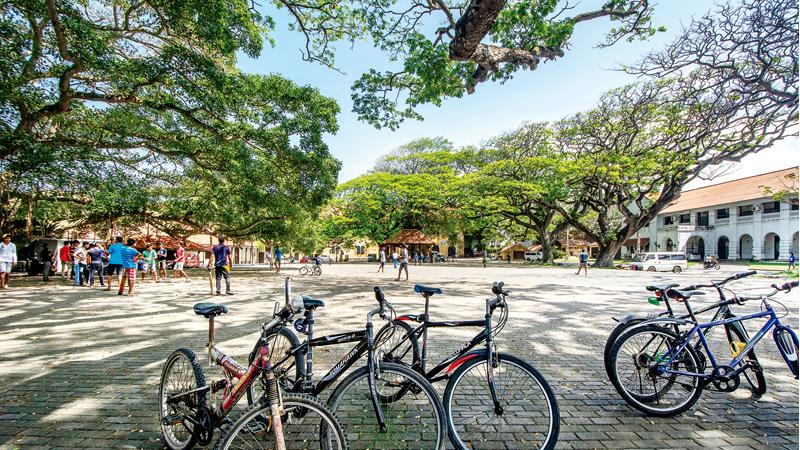
Sri Lanka - the resplendent isle- had been known by many names down the years where a multi-ethnic community lived peacefully for many decades without any tragedy or catastrophe.

But then we have had to face one of the most dreadful terrorist attacks in the world. Even today we shudder to think of the horrific moments when we had to live through an ethnic conflict, insurrections, riots, suicide bombings and assassinations for nearly three decades. We have also faced one of the most devastating natural catastrophes of the world, the 2004 tsunami which took away so many lives in the eastern and southern coastal belts of the country.
However, the 30-year ethnic conflict ended ten years ago, following which we were lulled into a state of peace and non-violence in post-war Sri Lanka. On hearing the Easter Sunday suicide attacks which targeted several Christian churches and five-star hotels in the city of Colombo, I recalled the past emotions of fear experienced during the civil war, wondering when and where the next bomb would blow up and how many innocent civilians would be caught in it.
 Having learnt from the past, this time round, the intelligent Sri Lankan community worked together as one nation and did not make the foolish mistake of communal unrest when they saw the tragedy that occurred on April 21.
Having learnt from the past, this time round, the intelligent Sri Lankan community worked together as one nation and did not make the foolish mistake of communal unrest when they saw the tragedy that occurred on April 21.
Ethnic mix
During my photographic journeys to many parts of the country with camera in hand to view religious monuments and rituals of various ethnic groups, I captured these images which portray the faith and peaceful existence among the different communities.
Surprisingly, at the sacred shrine of Kataragama on the southeast frontier, and at the pinnacle of Sri Pada or Adam’s Peak in the brink of the wilderness of the hill country, thousands of pilgrims gather to pay homage to their lords and gods. They are Sinhala, Tamil, Muslim and Burgher. Racial and religious distinctions play little or no part in their attendance, except in the nuances of individual worship.
This dramatic mingling of the island’s various groups, sharing a common physical space in worship, exemplifies the ethnic mix of Sri Lanka. Racially, it is a melting pot. Culturally, it is mosaic. Each of the groups persist in a unique complex of belief, custom, rites and rituals that regulate individual life and social behaviour.
There is no doubt that the names of members of the different ethnic groups signify some degree of racial uniqueness. Tamils, for example, are of Dravidian origin, while Moors have Arabian ancestry. Certain physiological features may further support claims to racial differences. Yet, the overriding fact remains that in the course of the island’s history, there has been such a high degree of intermixing and blending of physical characteristics that it is hardly possible to distinguish a member of one ethnic group from another purely by physical appearance.
Sri Lanka is not the only country which hosts a variety of socially and culturally distinct racial groups. Perhaps, what is special in the Sri Lankan case is that so much cultural diversity is found within the confines of a geographically small area.
Coexistence
Just as a wide variety of natural species compete and thrive in separate ecological niches in a piece of tropical jungle, so do the many social species in Sri Lanka coexist within a common socio-political habitat. Cultural traits and practices define the niche of each group. At the same time, other shared traits enable the different groups to mix and mesh.
Conflicts and tensions are bound to occur when distinct ethnic groups, occupying a small and limited physical territory, compete for survival and dominance. As a result, our nation has suffered an ethnic conflict for thirty long years. The new parasite of global-terrorism creeps into the island with the social modernization of youth in various ethnic groups, perhaps, with links with global terrorist networks. Eventually, we see the growing trend in the world today, promoting hatred and divisions creating terrorism and destruction in society with the so called extremist religious groups who sow the seed of hatred among all communities.
Jungle shrines like Kataragama, with its sacred ‘theatre’ allow for the cathartic removal of some of these tensions. The religiously motivated dance of the kavadi and the walk across the sacred fire can suspend smouldering the conflict.

In places like the glorious Galle Fort, a popular tourist spot in the island, visitors are fascinated by the lives of the Muslim community co existing with other communities, carrying on their businesses and practising their religion in the main mosque, a landmark of the old city.
The nature of ancestral identity and consciousness in Sri Lanka is extremely complex. Religious and ritual idioms are far more productive than political or constitutional mechanisms in promoting ethnic harmony. For ethnicity is not merely an ideological phenomenon in Sri Lanka: it is a deeply emotional one.
